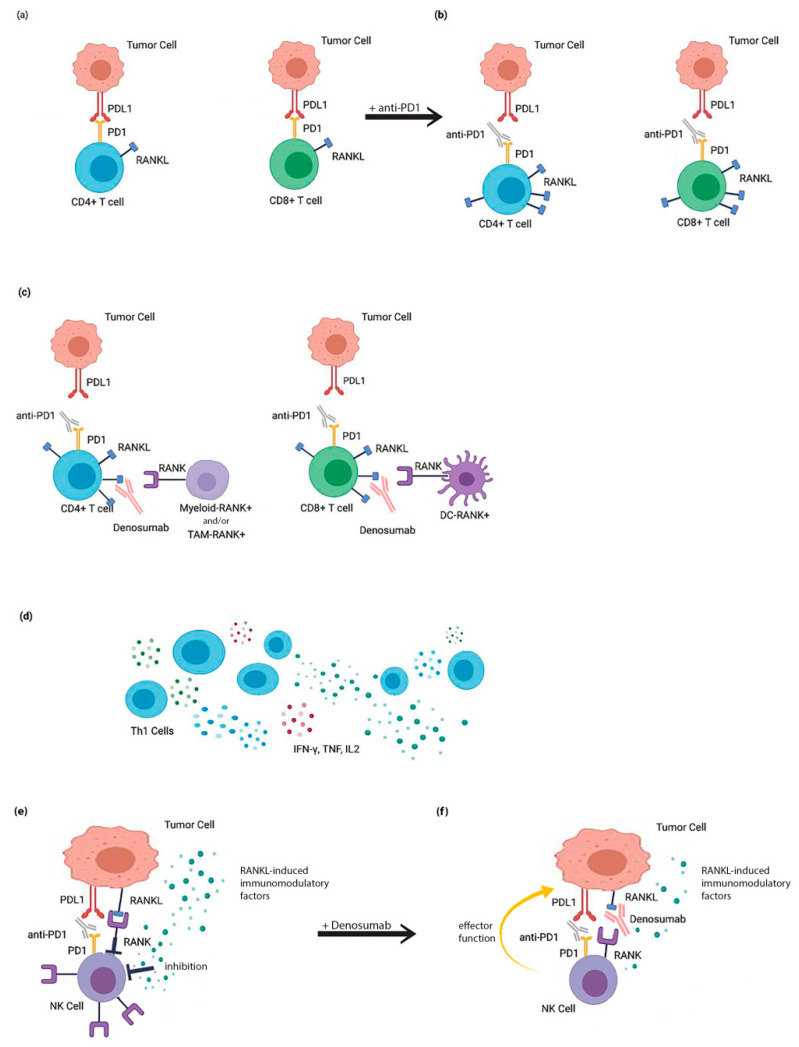Figure 1.
Coinhibition of receptor activator of nuclear factor-κB ligand (RANK) and immune checkpoint inhibitors (ICIs) in order to overcome primary resistance in RANK-positive breast cancer (BC) cells. (a) PD1–PDL1 interaction between RANK (+) BC cells and RANKL(+) CD4+ and CD8+ T-cells. (b) Administration of the anti-PD1 blockade leads to the increased expression of RANKL on tumor-infiltrating T-cells. (c) The combined administration with anti-PDI plus anti-RANKL leads to a decrease in immunosuppression mediated by RANK+ myeloid/dendritic/tumor-associated macrophage (TAM) cells. (d) Combinational therapy leads to an increase of T-cell infiltration and cytokine production (IFN-γ, TNF, IL2) by Th1 cells. (e) RANK–RANKL signaling induces the release of immunomodulatory factors by RANKL(+) BC cells that directly inhibit natural killer (NK) cell reactivity and induce additional RANK expression on their surface. RANK induces inhibitory signals to NK cells upon interaction with RANKL expressed by BCs. (f) The use of denosumab blocks the RANK–RANKL interaction. As a result, there is a reduced release of RANKL-induced immunomodulatory factors. Additionally, denosumab prevents inhibitory RANK signaling into NK cells and provokes enhanced NK cell antitumor reactivity, which acts synergistically with anti-PD1 immunomodulatory action.

